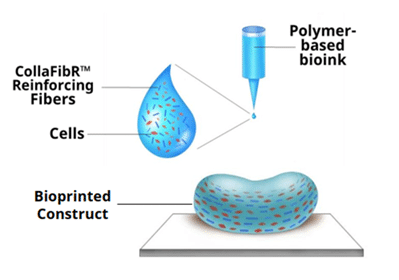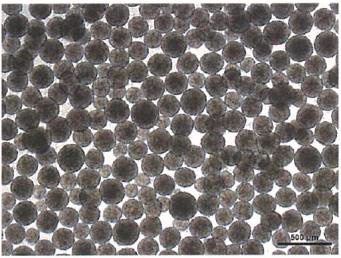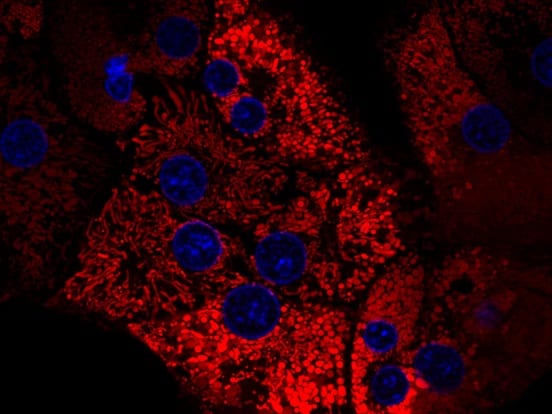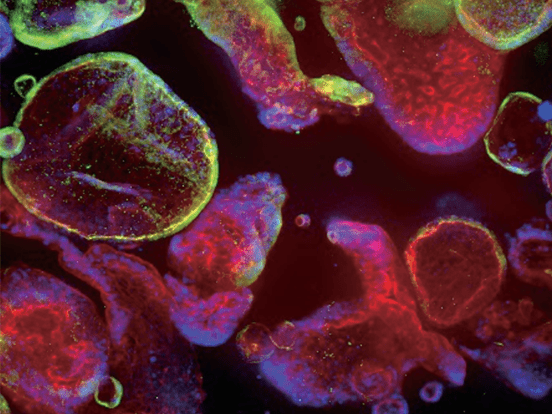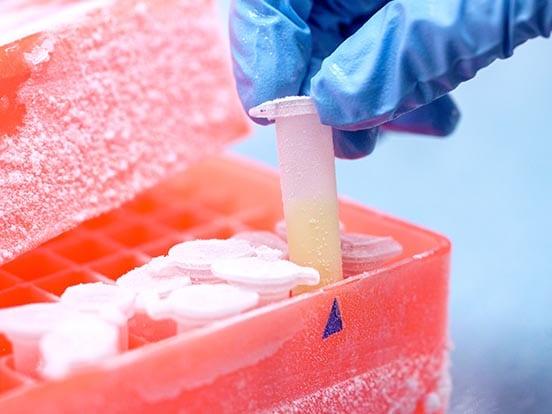Features
- Produced using GMP bovine type I collagen, and resembles natural collagen fiber structures
- Can be resuspended in any aqueous environment, including acidic environments (pH≥2)
- Compatible with all common bioinks, including GelMA, alginate, gelatin and agarose
- Validated with a variety of cell lines including fibroblasts, myoblasts, epithelial cells, neural cells and primary cells such as bone marrow derived MSCs
- Available with fluorescent tag
Benefits
- Increases mechanical strength and modulus of hydrogels in extension and compression
- Improves shape retention/durability for at least 28 days in bioprinted cellular constructs
- Acts as a physiologically relevant site for cell attachment within the constructs
- Improves shape fidelity without compromising bioink viscosity/printability
- Aligns with printhead flow, avoiding clogging for 3D printing applications.
Product Information Table
| Name | Datasheet | Packsize | Order |
|---|---|---|---|
| CollaFibR Additive (for Bioinks and Hydrogels). No FITC/ short fibers. | 25 mg | View | |
| CollaFibR Additive for Bioinks and Hydrogels. No FITC/ short fibers. | 10 mg | View | |
| Fluorescent CollaFibR Additive for Bioinks and Hydrogels. FITC Tag/ short fibers | 10 mg | View | |
| Fluorescent CollaFibR Additive for Bioinks and Hydrogels. FITC Tag/ short fibers | 25 mg | View |
Mechanical performance of Bioink with added μCollaFibR™
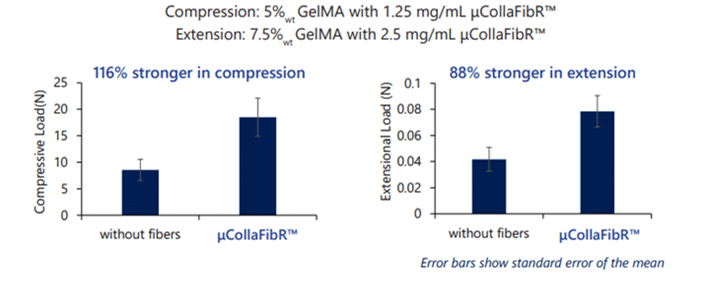
2.5 mg/mL of μCollaFibR™ improves the extensional strength of 7.5%wt GelMA constructs by 88%. (B) 1.25 mg/mL of μCollaFibR™ improves the compressive strength of 5%wt GelMA constructs by 116%.
Improved Shape Retention with added μCollaFibR™
Cellular constructs with (A) μCollaFibR™ have over 90% shape retention after 28 days in culture, compared to (B) 25% shape loss after only 6 days in culture in the control. The mold diameter is 11 mm.
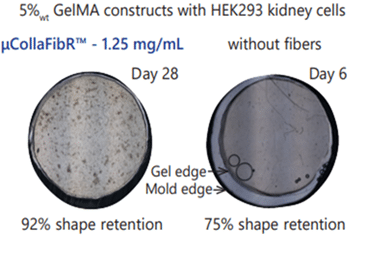
Improved Cell Functionality with added μCollaFibR™
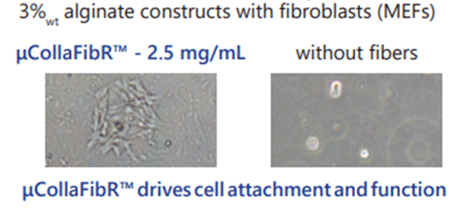
In bioinert constructs, μCollaFibR™ provides a physiologically relevant site for cell attachment, improving cell functionality. Scale bar = 100 μm.
μCollaFibR™ as microcarrier for Bioreactors
μCollaFibR™ can provide a physiologically relevant attachment site for cell expansion in bioreactors, which can increase yield of cells and/or biologics of interest.
μCollaFibR™ eliminates the need for trypsin in cell recovery, preserving the natural protein structure of cells and potentially reducing costs and time required in cell recovery.
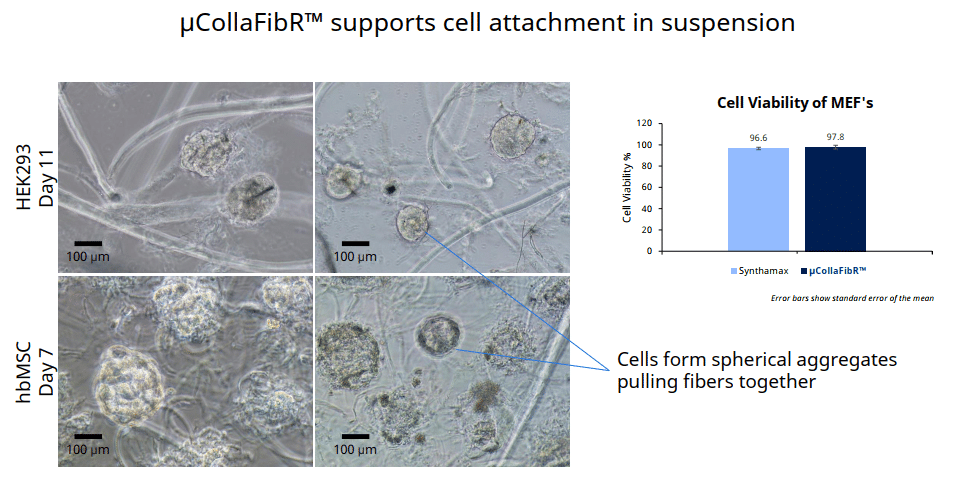
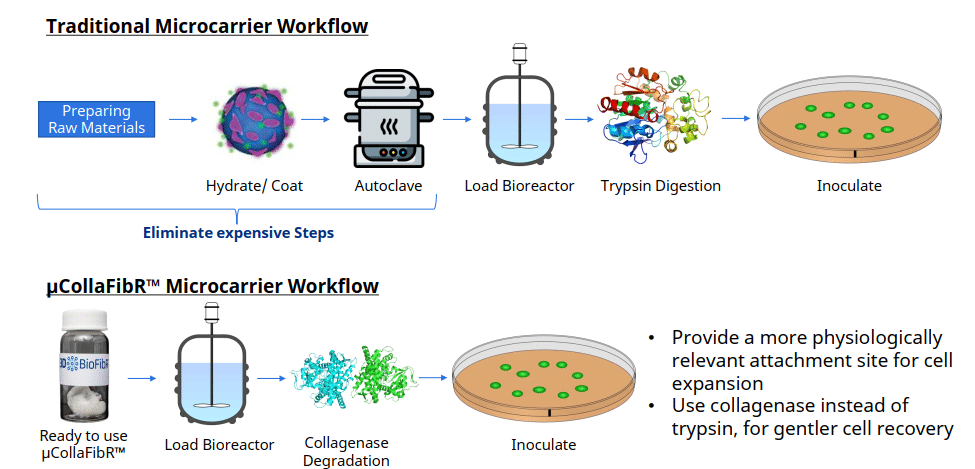
Collagenase Degradation of CollaFibR™ for Cell Recovery
Our Collagenase NB and Neutral Protease NB Enzymes are the perfect choice for degrading CollaFibR™ for easy cell extraction.
- Recommended is Collagenase NB 4 Standard Grade or Collagenase NB1 Premium Grade
- Dependable batch-to-batch consistency
- Isolate high yields of viable cells
- Available in research grade, clinical grade, and animal-free options
μCollaFibR™ Additive Frequently Asked Questions
What is the diameter of μCollaFibR™?
μCollaFibR™ is 1-2 micrometers in diameter in the dry state and 8-10 micrometers in diameter in the wet state.
What is the length of μCollaFibR™?
The average length of μCollaFibR™ is 44 ± 13 microns.
What bioinks are compatible with μCollaFibR™?
Most common bioinks, including GelMA, alginate, agarose, and gelatin are compatible with μCollaFibR™.
Which solvents are compatible with μCollaFibR™?
μCollaFibR™ can be dispersed in water, buffered salt solutions e.g. PBMS, weak acids (e.g. 10 mM HCL, 20 mM AA) and most off-the-shelf bioinks including gelMA, alginate, agarose, and gelatin.
What is the stability of μCollaFibR™ in acidic conditions?
μCollaFibR™ is stable in 10 mM HCL for up to 6 months.
What is the recommended storage temperature for μCollaFibR™?
μCollaFibR™ is shipped at RT and once received, please store between 2-8°C for short term storage (up to 3 months) and -20°C for longer term storage.
What is the maximum working temperature for μCollaFibR™?
The maximum temperature is below 60°C.
What sterilisation method is recommended for μCollaFibR™?
μCollaFibR™ is supplied in sterile packaging and is ready for use. Do not autoclave the product as it is not stable at temperatures above 60°C. Do not filter sterilise the product as the fibers are too large to pass through a filter.
What cell types are compatible with μCollaFibR™?
μCollaFibR™ has been validated with a variety of cell lines including fibroblasts, myoblasts, epithelial cells, neural cells and primary cells such as bone marrow derived MSCs.
Can I buy fluorescent μCollaFibR™?
Yes, μCollaFibR™ can be purchased in both fluorescent and non-fluorescent formats.
What is the source of Collagen used in μCollaFibR™?
Type I collagen sourced from bovine hide (skin) manufactured in a GMP facility.
